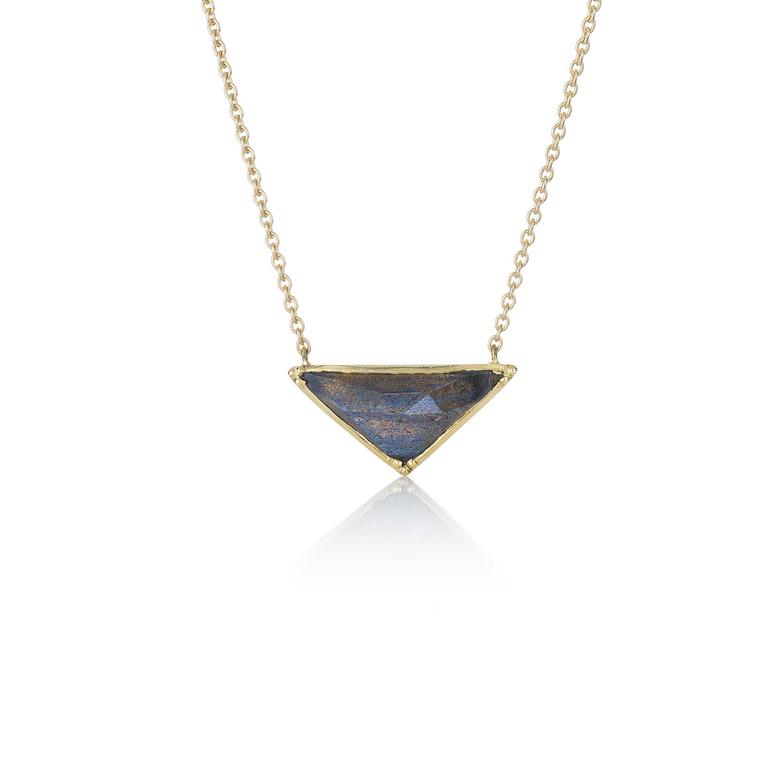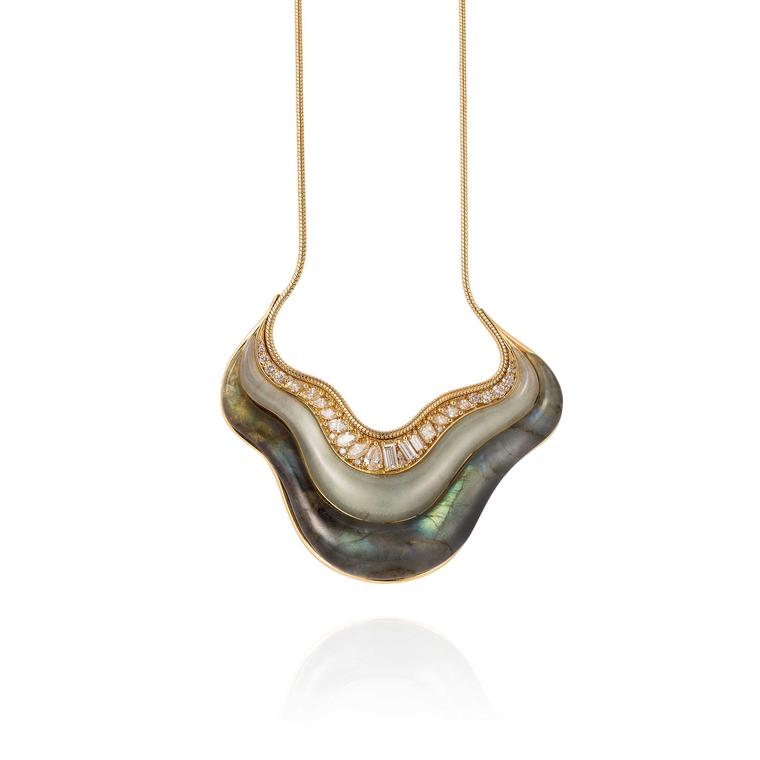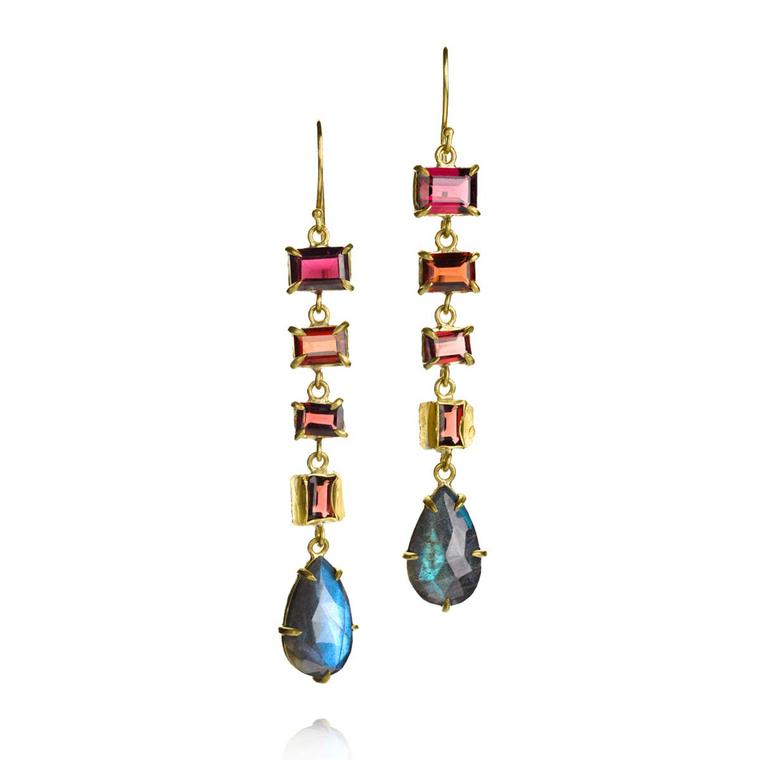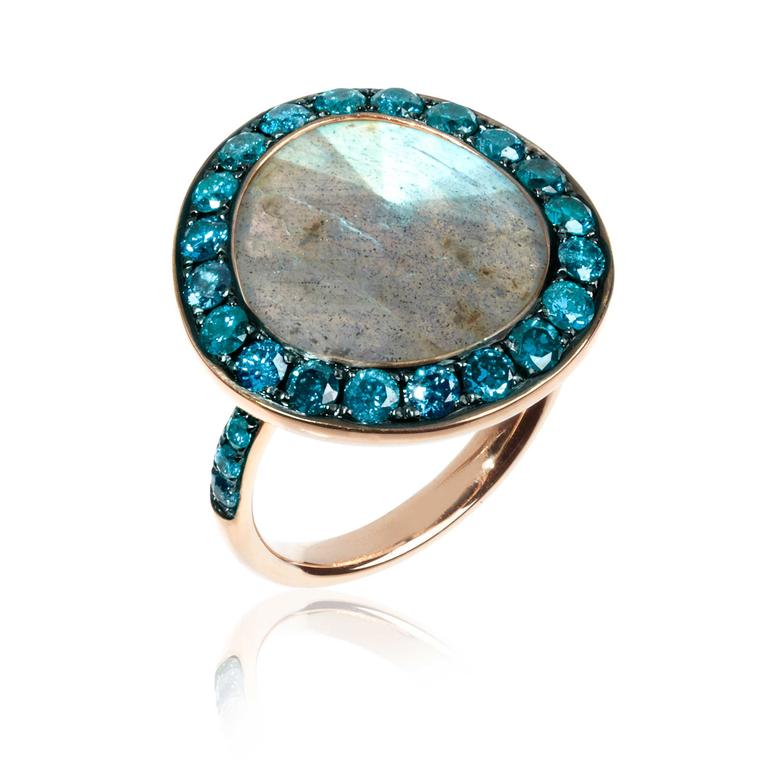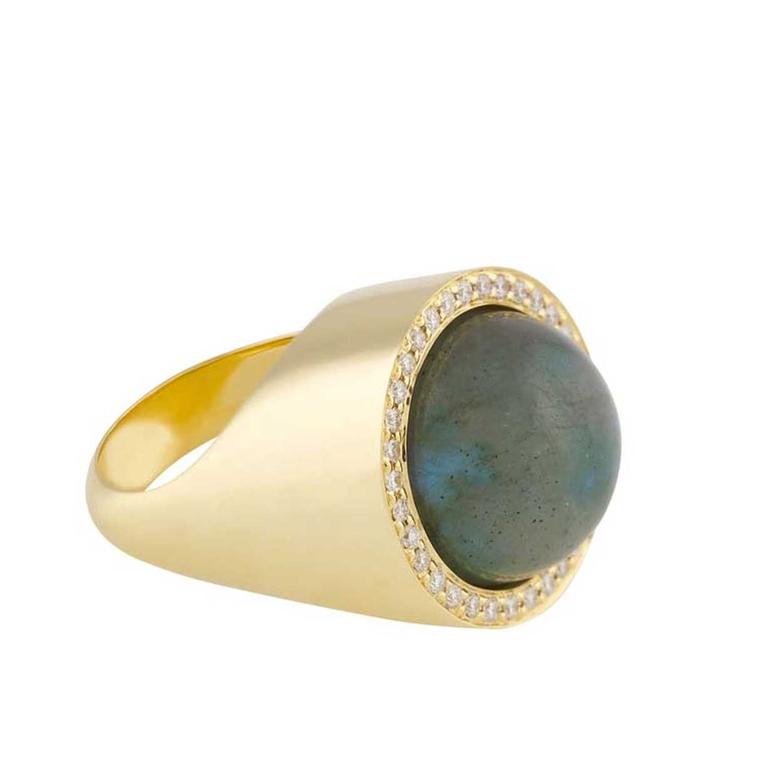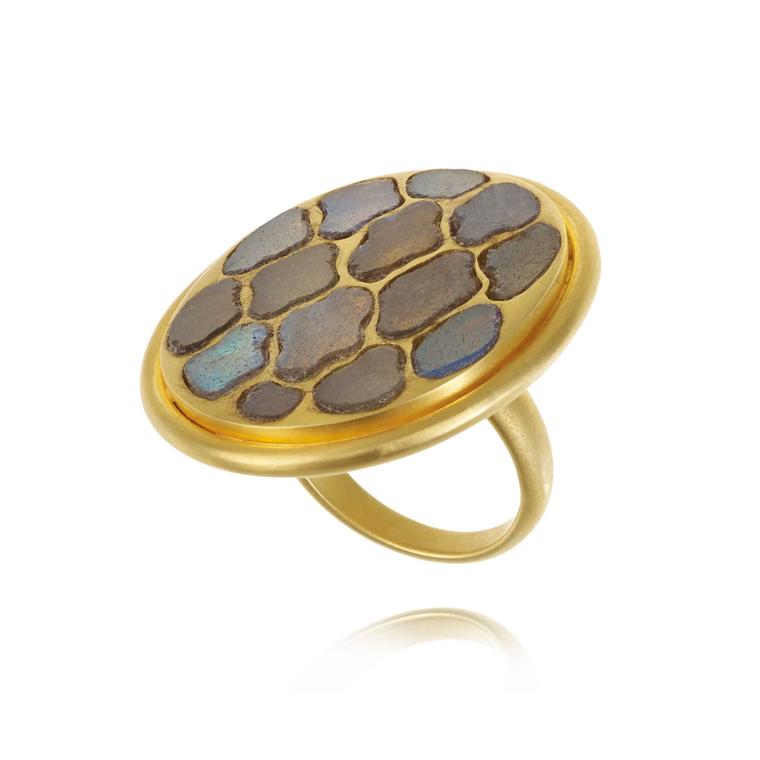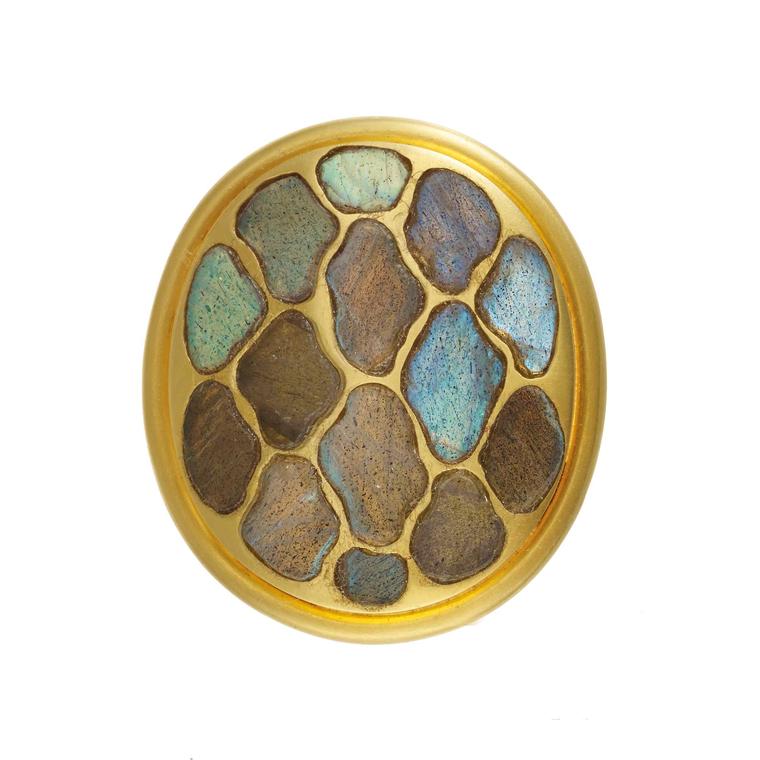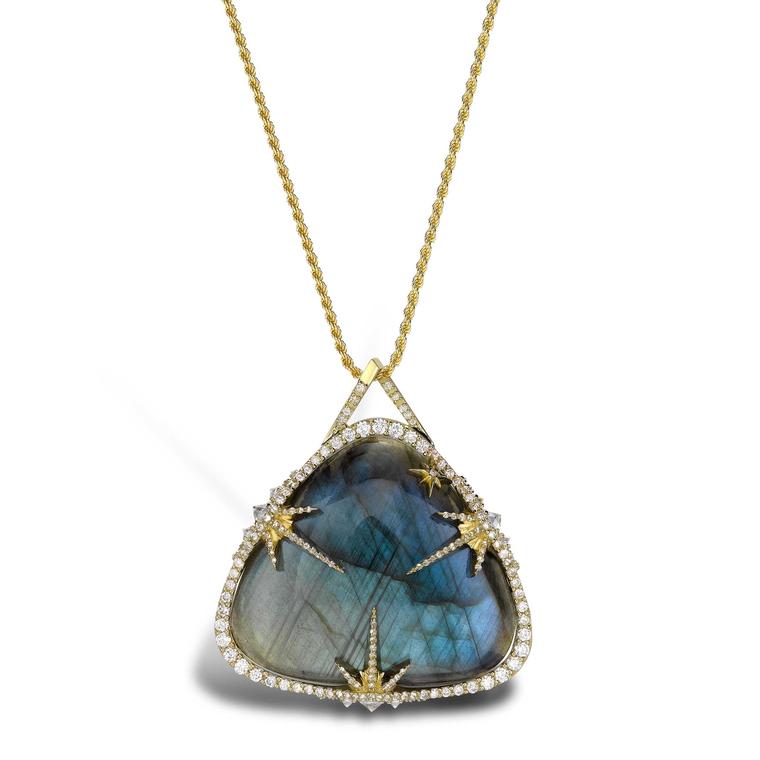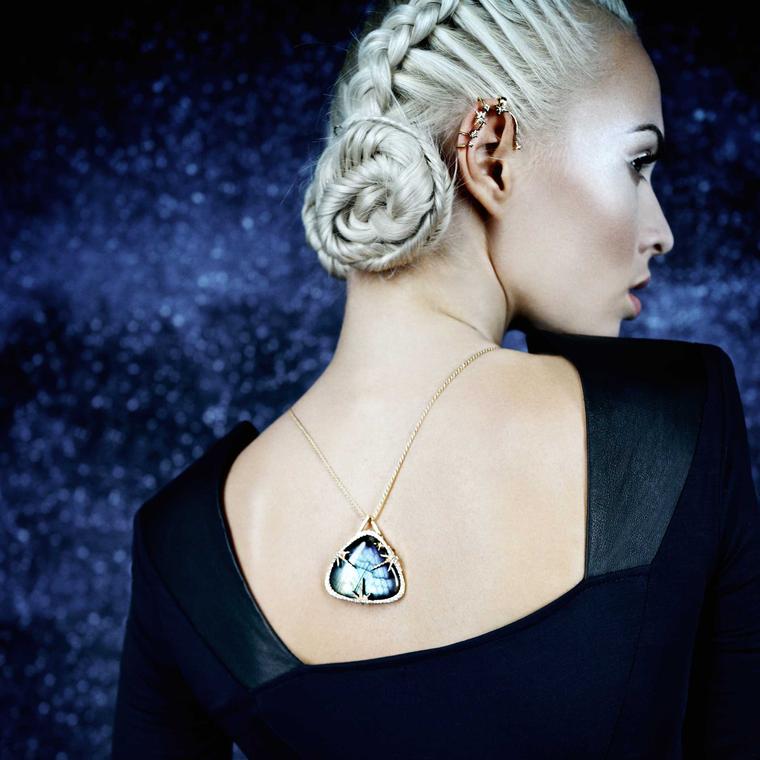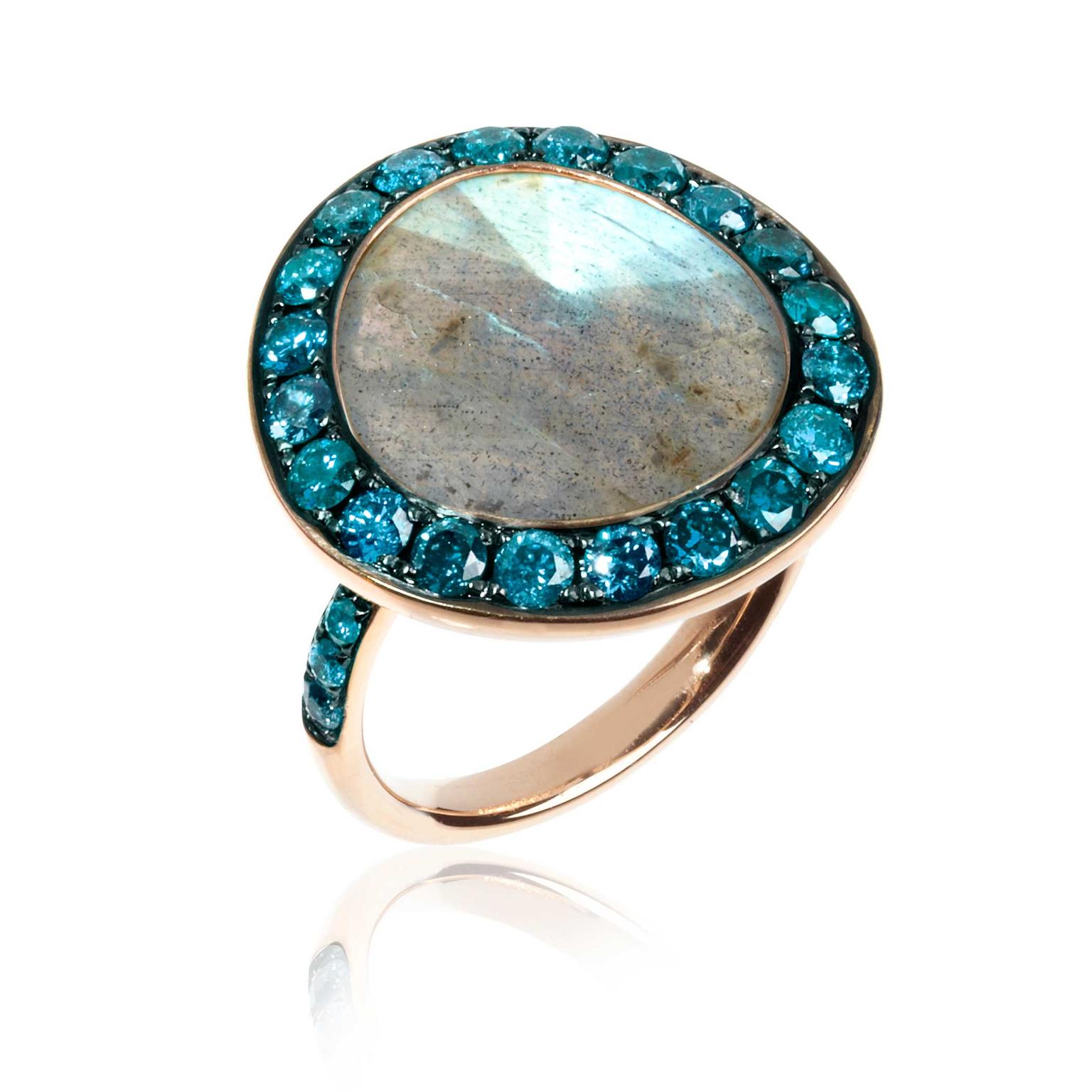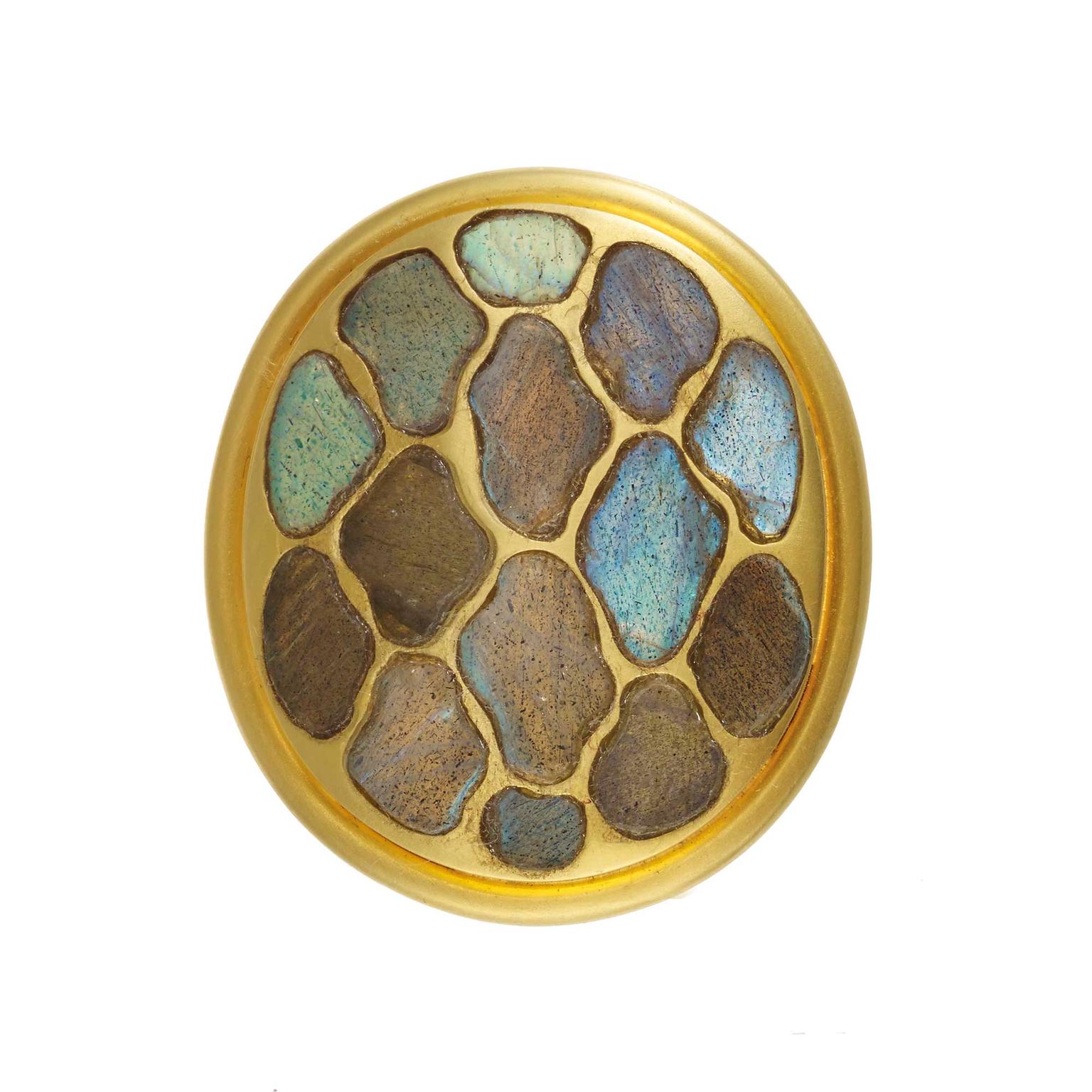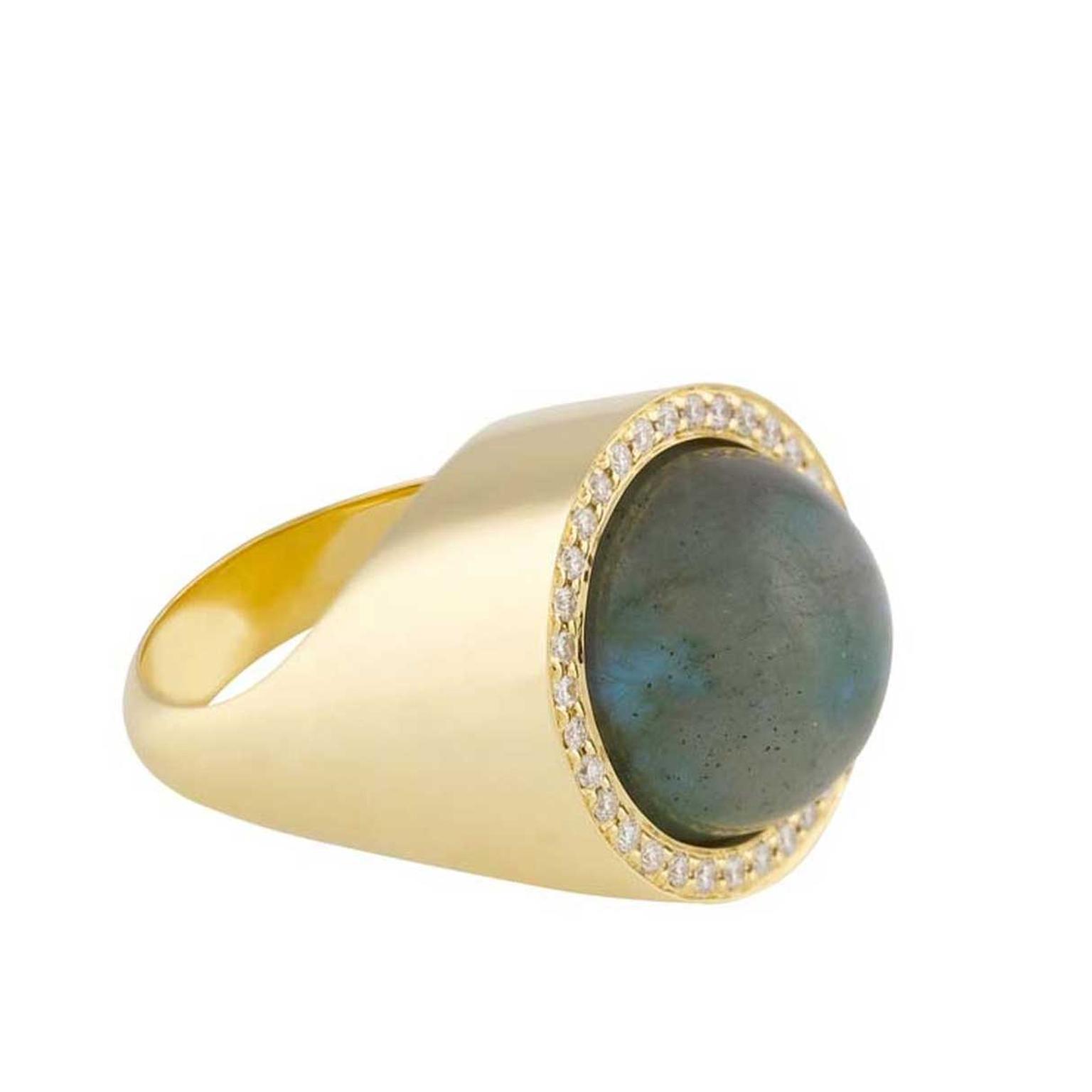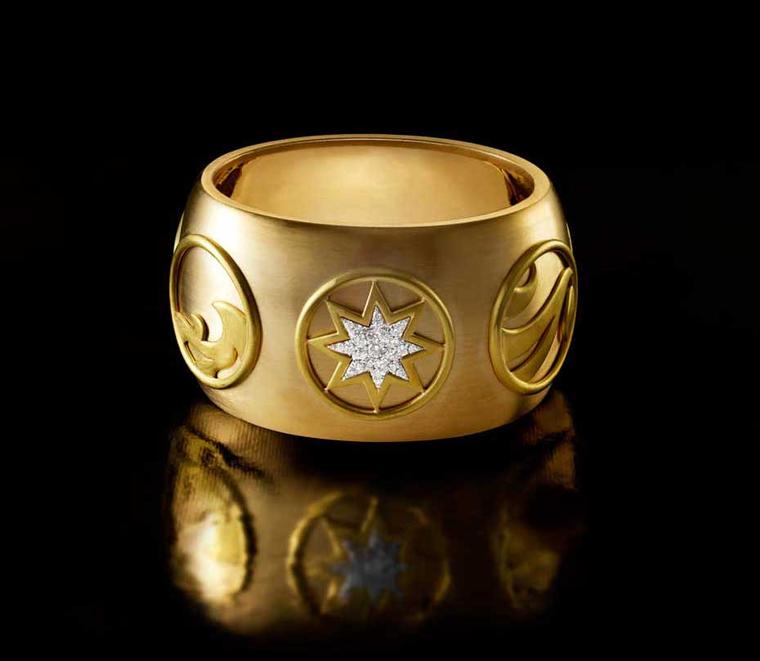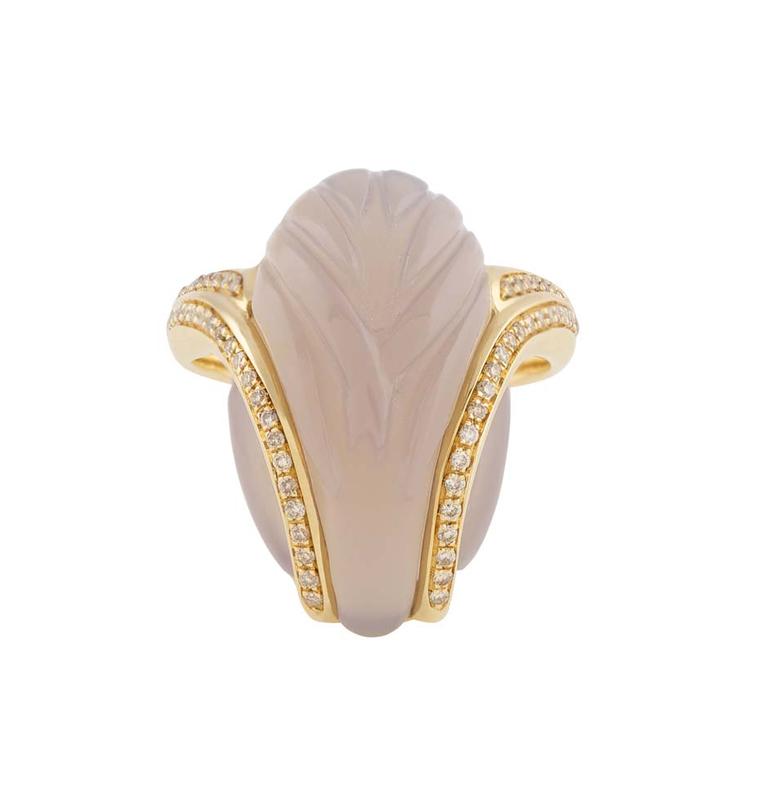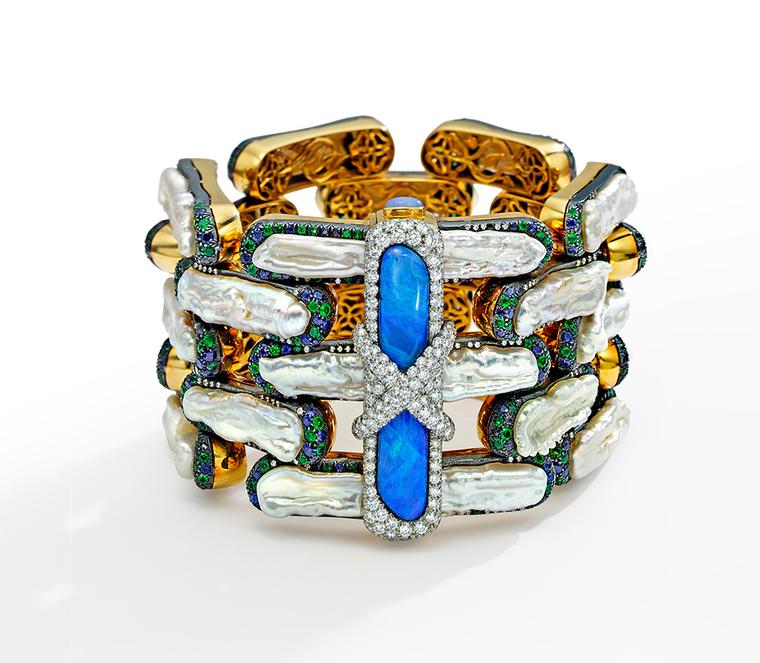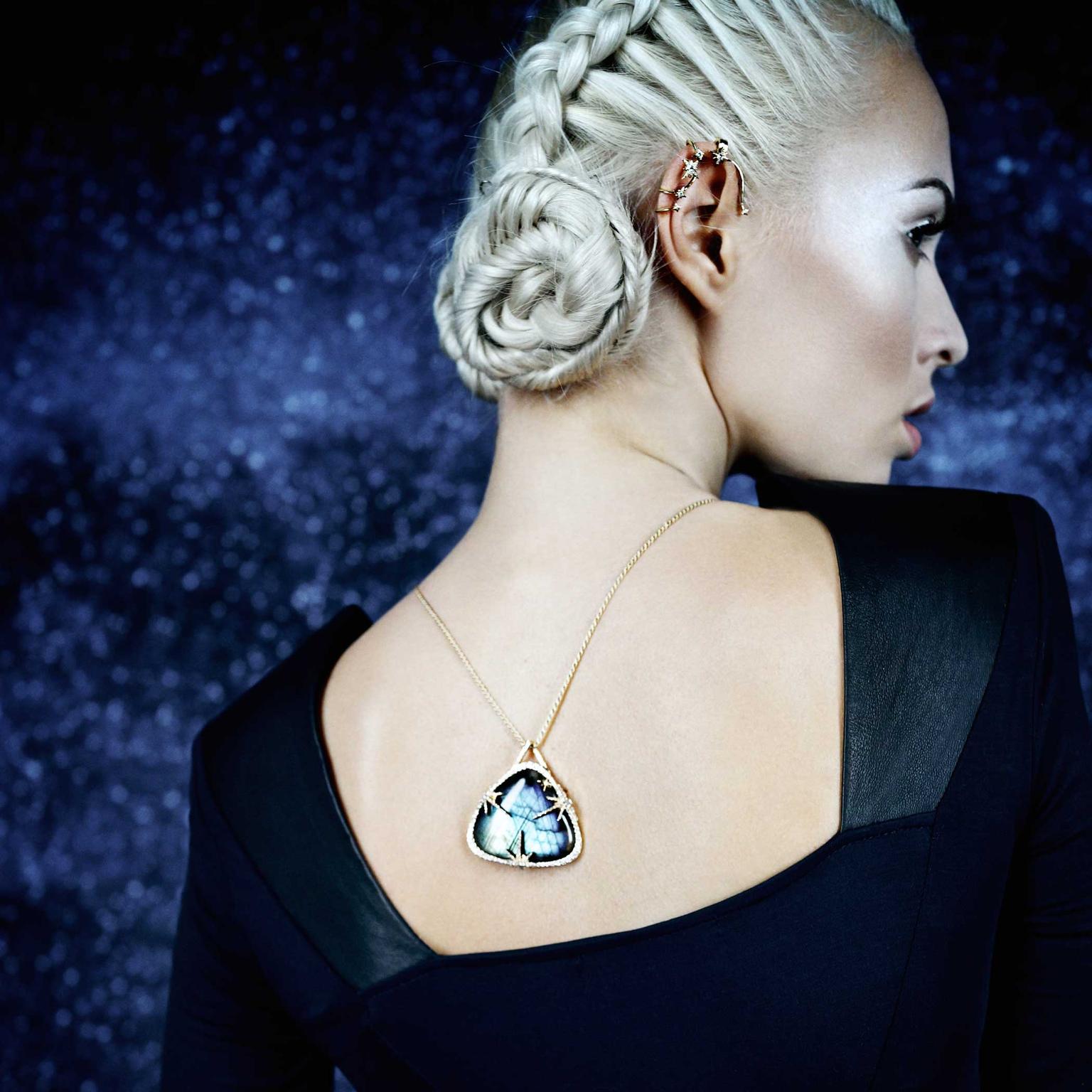
By Leslie Jordan Clary
With a dark shimmer that changes in the light, it’s hard to imagine a more mysteriously beautiful precious stone than labradorite - a gem that legend says has celestial origins.
Europeans first discovered labradorite in the 18th century on Canada’s Paul Island, off the coast of Labrador. However, the coastal Eskimo people have long used a powdered form of the stone, called “fire rock”, for healing. Inuit legend tells the story of a warrior wandering along the coast and coming across scintillating pieces of the Aurora Borealis trapped among the rocks. Since these Northern Lights were also the shining spirits of the ancestors, the warrior pried them loose with his spear so they could return to the sky, but some remained and these became labradorite.
Labradorite is a member of the plagioclase series, and its feldspar minerals range in composition from pure albite to pure anthorite. Labradorite comes in at about 50 to 70 percent anthorite. However, the significant thing about the plagioclase series is nearly all its members demonstrate lamellar twinning - three directions of cleavage, two of which form almost right-angle prisms. This is due to an error in the crystal structure during growth and is the cause of labradorite’s benchmark schiller effect, which comes in a display of luscious purple, blue or green.
View more fine jewelry featuring labradorite
The unique schiller effect has been given its own term: labradoresence. It is created when the light enters the stone through its cracks, and is then reflected back. While iridescence seems to glow on the surface of coloured gemstones, labradoresence appears to light up from the stone’s interior. When you turn a piece of labradorite jewellery, it flickers in different tones and shades like a candle burning inside.
Labradorite is a fairly soft stone registering between 6 and 6.5 on the Mohs scale, but it’s a complex one. No two are alike and today’s high jewellery houses are taking note of this unusual gem.
Lebanese Noor Fares prominently features labradorite in its Tilsam collection. The gold Aurora ring features a cabochon labradorite sphere, set into a chunky gold ring, that resembles a mysterious planet. Meanwhile, ethical jeweller Pippa Small sets a mosaic of labradorite into a bold and beautiful gold cocktail ring, designed to look like a turtle's shell, revealing its myriad colours.
View the Tilsam collection from Noor Fares jewellery
Labradorite is still mined in Canada, but it is also found in deposits around the world. One of the most colourful labradorites comes from Finland. Other important deposits are in Madagascar, Australia and the United States.
With its unusual depth of colour, it’s probably not surprising that the metaphysical properties of labradorite are in the psychic realm. It’s reported to bring good luck, increase lucid dreaming, provide clear insight, and enhance psychic abilities. It also helps dispel negative energy, depression and anxiety.
But perhaps the description that best illustrates both its physical and metaphysical traits is as a rainbow bridge between the conscious and unconscious mind.


